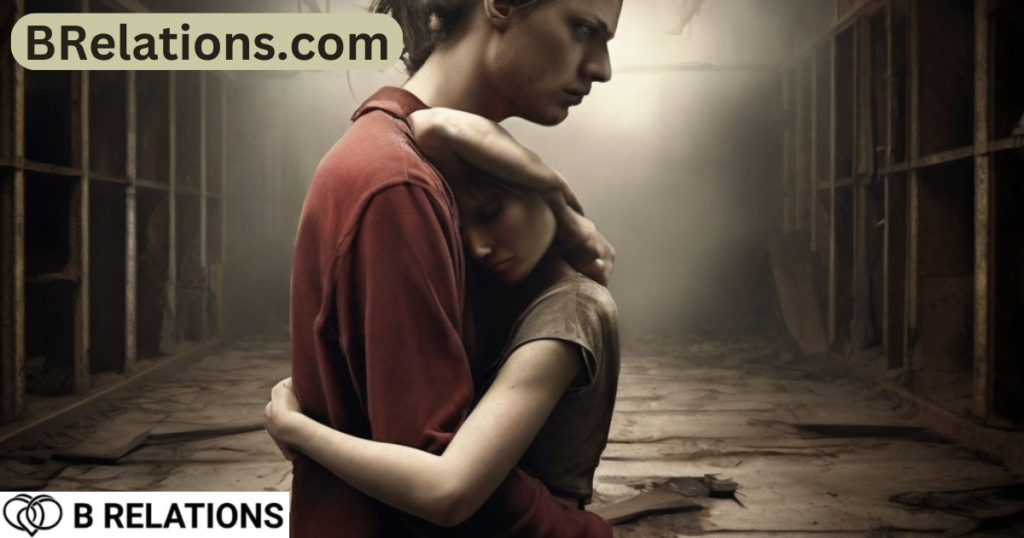Relationship abuse is a pervasive issue that can manifest in various forms, often extending beyond physical violence. Understanding what constitutes abuse and recognizing its signs are crucial steps in breaking the cycle and seeking help. In this guide you will find relationship abuse definition and all about it.
Did you know that 1 in 4 women experience intimate partner violence? This shocking statistic highlights the prevalence of relationship abuse and underscores the urgent need to address this pervasive issue.

Relationship Abuse Definition:
Relationship abuse refers to patterns of behavior used by one partner to exert power and control over the other. It can encompass various forms of mistreatment, including physical, emotional, sexual, financial, and technological abuse. Contrary to popular belief, abuse isn’t always overt; it can be subtle and insidious, making it challenging to identify.
Differentiate:
Before delving into the intricacies of Relationship Abuse definition, it’s important to differentiate it from healthy conflict and disagreements that are a natural part of any relationship. While healthy relationships may encounter occasional conflicts, abuse is characterized by a pattern of harmful and controlling behaviors aimed at gaining power and dominance over a partner.
Quote:
“Abuse isn’t just physical; it’s a violation of your right to safety and respect.” – Sarah Miller, Domestic Violence Advocate
Types of Relationship Abuse Under Relationship Abuse Definition:
Relationship abuse can manifest in several ways, including:
- Physical Abuse:
Inflicting physical harm or injury, such as hitting, punching, or slapping.
- Emotional/Verbal Abuse:
Belittling, criticizing, or manipulating the partner’s emotions through words or actions.
- Sexual Abuse:
Coercing or forcing sexual activity without consent.
- Financial Abuse:
Controlling finances, withholding money, or preventing the partner from accessing resources.
- Technological/Cyber Abuse:
Monitoring or controlling the partner’s online activities, harassing them through social media, or using technology to intimidate them.
- Isolative Control:
Limiting the partner’s social interactions, isolating them from friends and family, or exerting control over their daily activities.
Examples of these types of abuse may include a partner constantly checking their significant other’s phone messages (technological/cyber abuse), withholding money to restrict their partner’s independence (financial abuse), or belittling and insulting them repeatedly (emotional/verbal abuse).

Signs of Relationship Abuse:
Recognizing the signs of relationship abuse is crucial for intervention. Common warning signs include:
- Emotional/Verbal Signs:
Constant criticism, insults, threats, or attempts to control the partner’s emotions.
- Behavioral Signs:
Controlling finances, monitoring phone or computer use, isolating the partner from friends and family, or exhibiting possessive behavior.
- Physical Signs:
Injuries such as bruises, cuts, or broken bones, often with inconsistent or implausible explanations.
| Healthy Relationship Behaviors | Abusive Relationship Behaviors |
| Open communication | Manipulation and control |
| Mutual respect and support | Verbal insults and belittling |
| Trust and honesty | Physical violence and intimidation |
Beyond the Surface: Recognizing Hidden Red Flags
Controlling Behavior:
Abusers often exert control over their partners by isolating them from friends and family, monitoring their activities, and making decisions for them without their consent.
Jealousy & Possessiveness:
Excessive jealousy and possessiveness are common red flags of abuse. Abusers may exhibit irrational jealousy, make unreasonable accusations, and attempt to control their partner’s social interactions.
Guilt & Blame-Shifting:
Abusers frequently manipulate their partners’ emotions by making them feel responsible for the abuse. They may shift blame onto the victim, deny their actions, and minimize the severity of the abuse.
Minimizing & Denying:
Abusers often downplay their abusive behavior, making excuses for their actions, and refusing to acknowledge the harm they cause. This tactic can leave victims feeling confused, invalidated, and trapped in the cycle of abuse.
Quote:
“It started with controlling comments, and escalated from there.” – Emma Johnson, Survivor of Abuse
Beyond Silence: Seeking Help and Breaking Free
Self-Assessment:
Self-reflection is a crucial first step in recognizing and acknowledging abuse. By asking themselves tough questions about their Relationship Abuse definition dynamics, individuals can gain insight into the presence of abuse and take steps towards safety and healing.
The Cycle of Abuse:
The cycle of abuse typically follows a pattern characterized by phases of tension building, incident, reconciliation, and calm. This cycle perpetuates the abusive dynamics in the relationship, making it challenging for the victim to break free. Below is an illustration of the cycle:
Breaking the Cycle:
Breaking free from the cycle of abuse requires courage and support. Individuals are encouraged to reach out to trusted friends, family members, hotlines, or professionals for guidance, validation, and practical assistance.

Resources & Support:
Seeking Help for Relationship Abuse:
If you or someone you know is experiencing relationship abuse, it’s essential to seek help and support. Resources such as hotlines, shelters, and counseling services are available to provide assistance and guidance. Remember, you are not alone, and you deserve to be treated with respect and dignity.
National Domestic Violence Hotline: 1-800-799-SAFE (7233)
“You are not alone. You deserve to be treated with respect.”
“You are not alone, and there is help available.” – Dr. Mark Thompson, Therapist
Your Journey to Safety and Healing
Self-Care & Empowerment:
Self-care is an essential component of healing from abuse. Individuals are encouraged to prioritize their well-being, build a healthy support system, and engage in activities that promote healing and self-discovery.
Breaking the Stigma:
By speaking up about their experiences and challenging societal norms that perpetuate abuse, individuals can help break the cycle of silence and stigma surrounding Relationship Abuse definition. Together, we can create a culture of empathy, support, and accountability.

Conclusion:
As we conclude our exploration of Relationship Abuse definition, identifying its various forms and warning signs, and seeking help when needed, individuals can reclaim their autonomy and safety. Recognizing and understanding the dynamics of relationship abuse is the first step towards breaking free from its grip. Remember, there is hope, and support is available for those who reach out. It’s time to prioritize safety and well-being, seek help if you are experiencing abuse, and stand up for others who may be facing similar situations. By taking action, we can create a future free from the shadows of abuse—a future defined by love, respect, and empowerment.
Google Suggested Questions:
What is the difference between a fight and relationship abuse?
A fight in a healthy relationship involves mutual respect, open communication, and resolution without resorting to violence or manipulation. Relationship abuse, on the other hand, involves patterns of behavior used by one partner to exert power and control over the other, often resulting in physical, emotional, or psychological harm.
How can I tell if my partner is controlling?
Signs of controlling behavior may include monitoring your activities, isolating you from friends and family, dictating your choices and decisions, and exhibiting jealousy or possessiveness. If you feel like your autonomy is being restricted or manipulated, it’s essential to seek support and evaluate the dynamics of your relationship.
Where can I get help if I am being abused?
If you are experiencing relationship abuse, there are resources available to provide assistance and support. You can reach out to hotlines, shelters, counseling services, or trusted friends and family members for help. Remember, you deserve to be safe and respected, and help is available for those who seek it.



